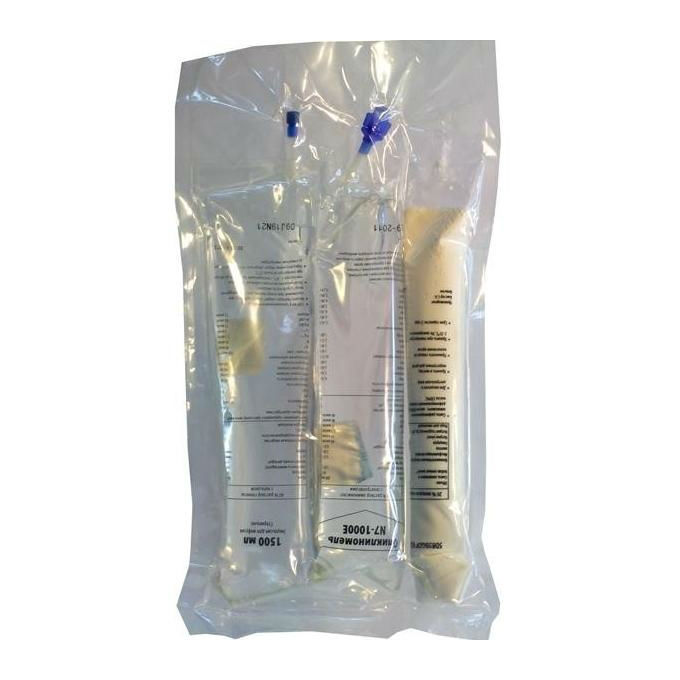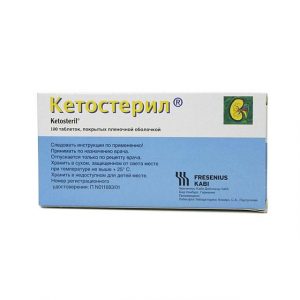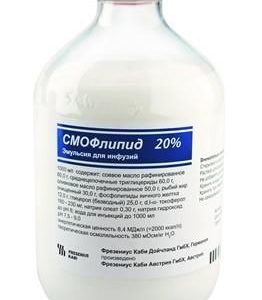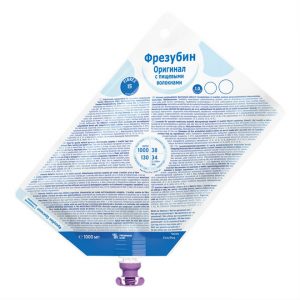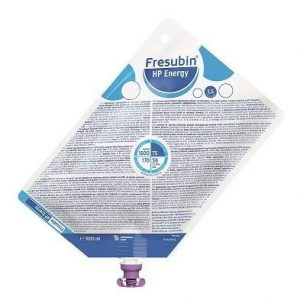Description
Latin name
Oliclinomel N7-1000 E
Release form
Emulsion for infusion.
Packing
4 packs of 1.5 l.
Indications
Parenteral nutrition.
Contraindications
Hypersensitivity, severe renal failure in the absence of hemofiltration or dialysis, severe liver failure, congenital metabolic disorders of amino acids, severe coagulation disorders, severe hyperlipidemia, hyperglycemia, electrolyte metabolism, one concentration, increased concentration mixtures, lactic acidosis, pulmonary edema, hyperhydration, decompensated heart failure, hypotonic dehydration, unstable standing (including severe post-traumatic conditions, decompensated diabetes mellitus, acute phase of hypovolemic shock, acute phase of myocardial infarction, severe metabolic acidosis, severe sepsis, hyperosmolar coma), children (up to 2 years).
Use during pregnancy and lactation
There are no reliable data on the use of the drug in pregnant and lactating women. In each case, the doctor must assess the ratio of risk and benefit.
Composition
Active substances: L-alanine 4.56 g, L-arginine 2.53 g, L-valine 1.28 g, L-histidine 1.06 g, Glycine 2.27 g, L-isoleucine 1.32 g, Potassium chloride 1.19 g, L-leucine 1.61 g, L-lysine 1.28 g, Magnesium chloride hexahydrate 450 mg, L-methionine 880 mg, Sodium acetate trihydrate 980 mg, Sodium glycerophosphate 2.14 g, L-proline 1.5 g, L-serine 1.1 g, L-tyrosine 90 mg, L threonine 920 mg, L-tryptophan 400 mg, L-phenylalanine 1.32 g, water d / i, acetic acid.
Dosage and administration of
IV, through a central vein. The dose of the drug and the duration of the appointment are determined by the need for parenteral nutrition and the condition of each individual patient.
Adults. The average need for organic nitrogen is 0.16 0.35 g / kg / day (approximately 1 2 g of amino acids / kg / day). Energy requirements averaged 25 40 kcal / kg / day.
The maximum daily dose is 36 ml / kg body weight, which is equivalent to 1.44 g of amino acids, 5.76 g of dextrose, 1.44 g of lipids per kg of body weight, i.e. 2520 ml of emulsion for a patient weighing 70 kg.
Children over 2 years old. The average need for organic nitrogen is 0.35 0.45 g / kg / day (approximately 2-3 g of amino acids / kg / day). Energy requirements average 60 110 kcal / kg / day. The dose depends on the amount of fluid received in the body and the daily requirement for protein. In this case, the state of water metabolism should be taken into account.
The maximum daily dose is 75 ml / kg body weight, which is equivalent to 3 g of amino acids, 12 g of dextrose and 3 g of lipids per kg of body weight. This daily dose should not be exceeded, except in special cases.
Maximum infusion rate not more than 1.5 ml / kg / h, i.e. no more than 0, 06 g of amino acids, 0.24 g of dextrose and 0.06 g of lipids per 1 kg of body weight per hour.
Drug Interaction
Pharmaceutically incompatible with blood preparations, compatible with solutions of vitamins, trace elements, organic phosphates, electrolytes.
Overdose
Symptoms: hypervolemia, acidosis, nausea, vomiting, shivering, electrolyte imbalance. With the introduction of too high doses of dextrose – hyperglycemia, glucosuria, hyperosmolar syndrome. The development of fat overload syndrome is possible.
Treatment: The infusion should be stopped. In severe cases, hemodialysis, hemofiltration or hemodiafiltration.
Storage conditions
At 2 25 ° C (do not freeze).
Expiration
2 years.
terms of sale from
pharmacies Prescription
dosage form Dosage
form of solution for infusion
